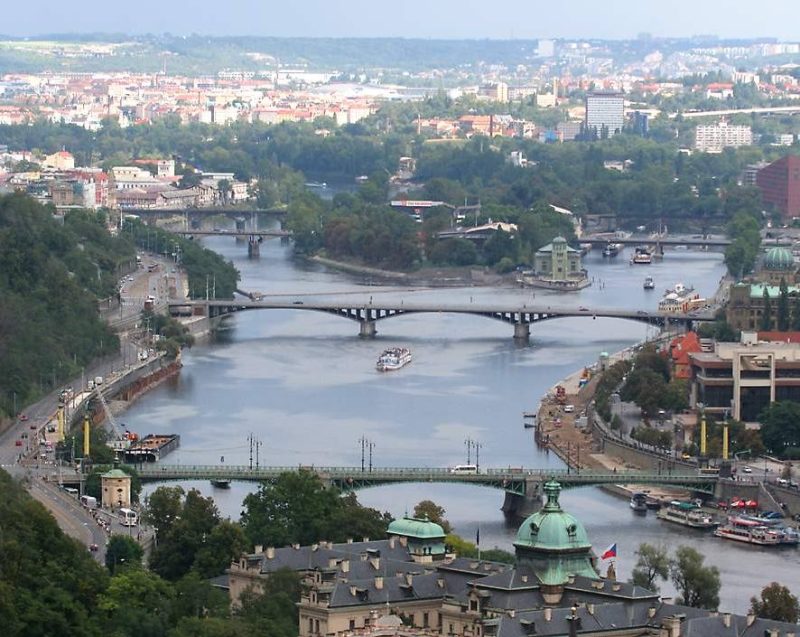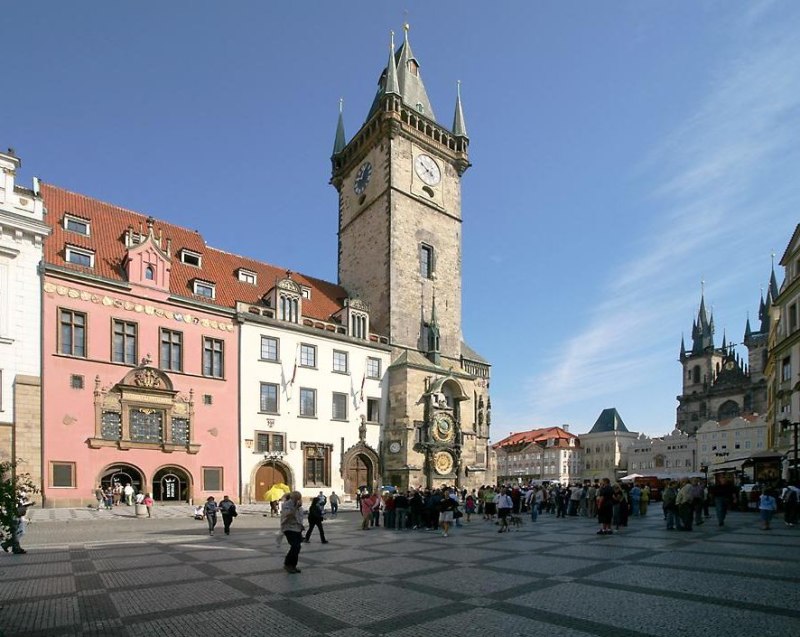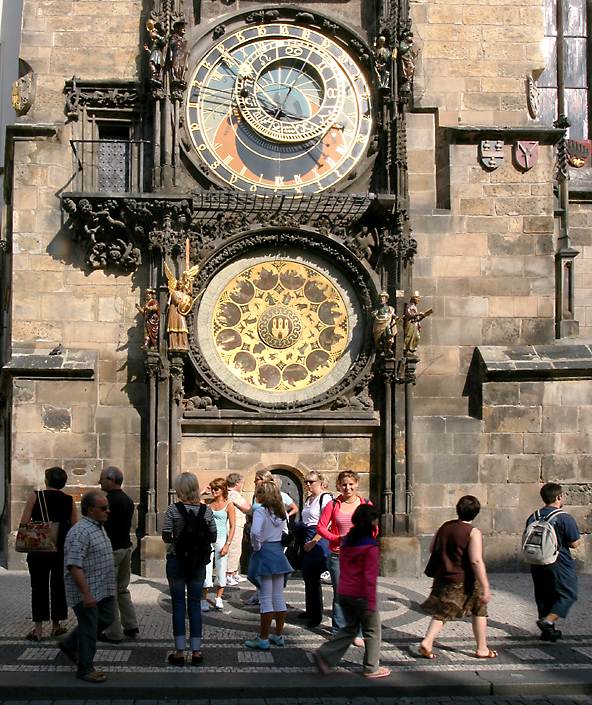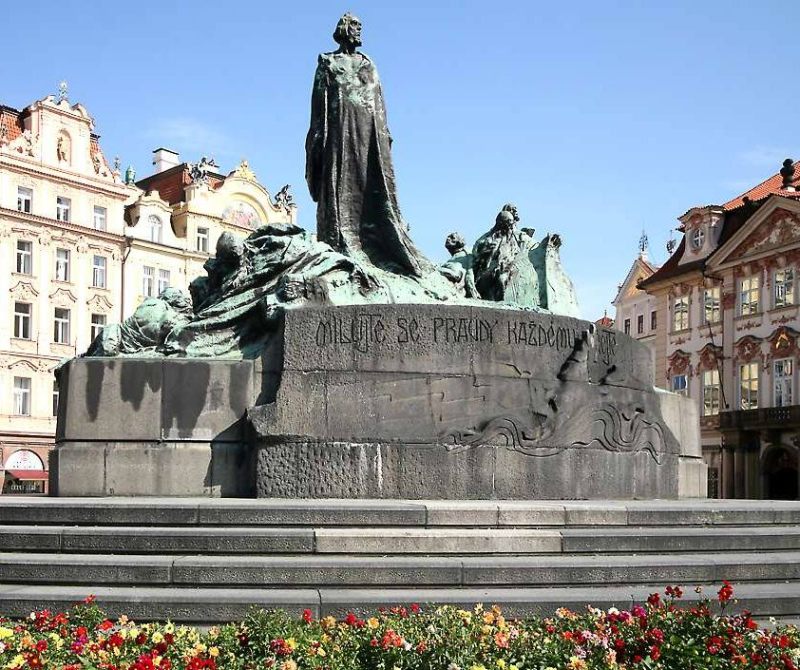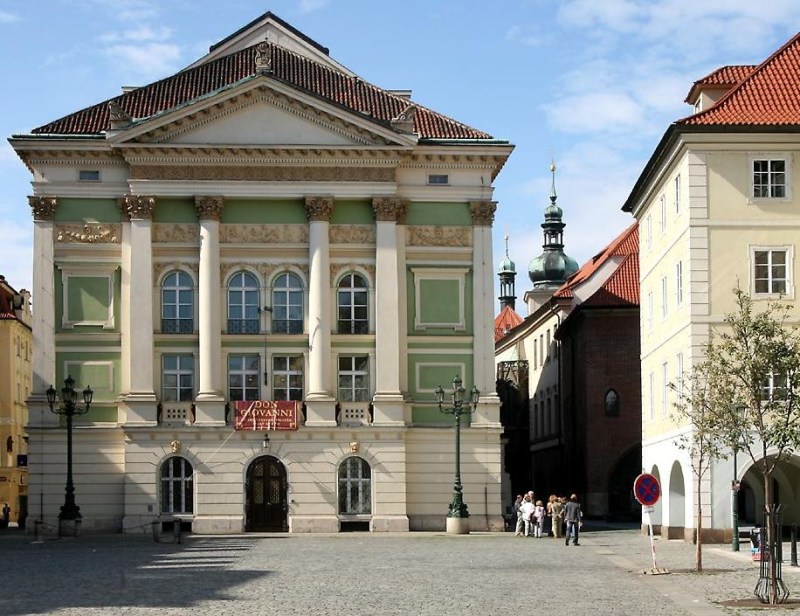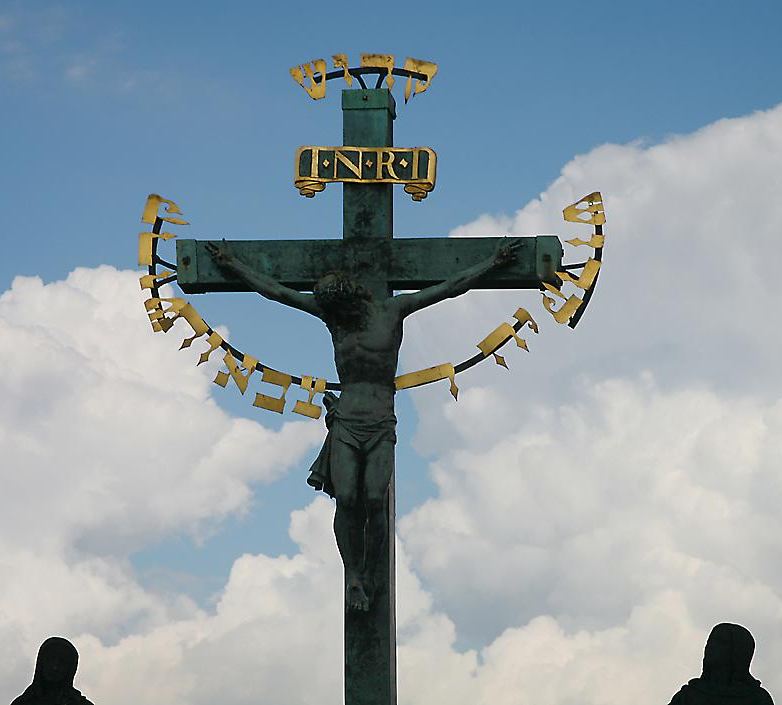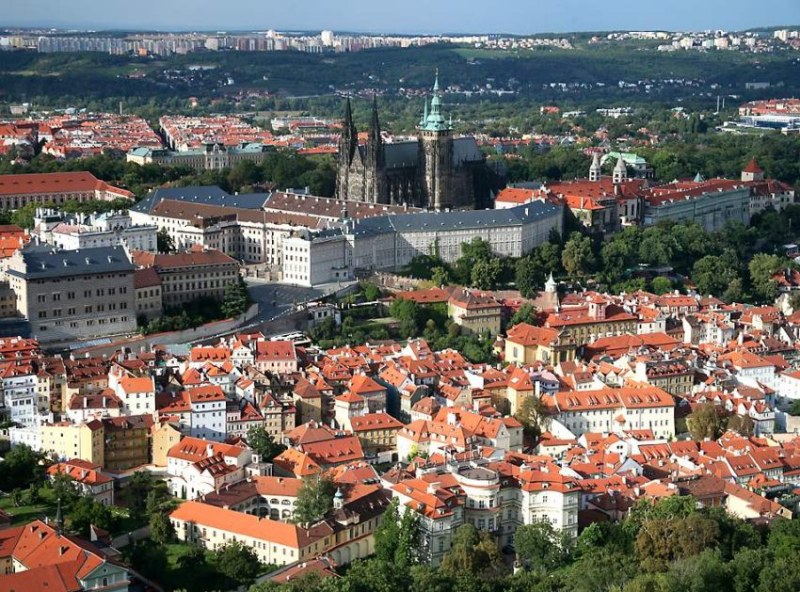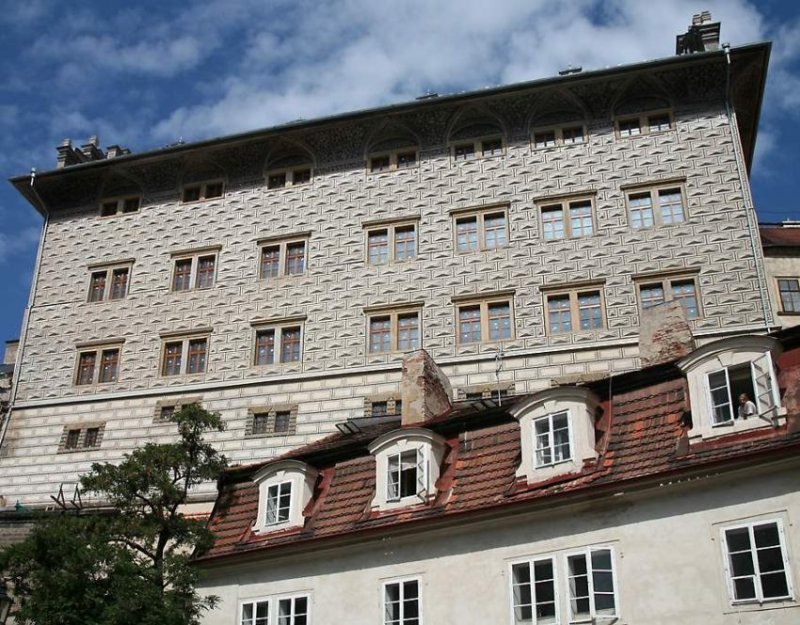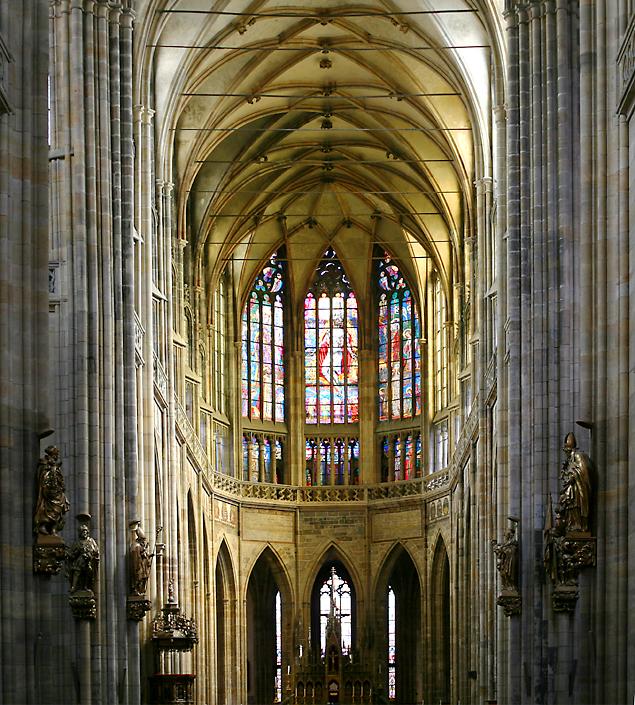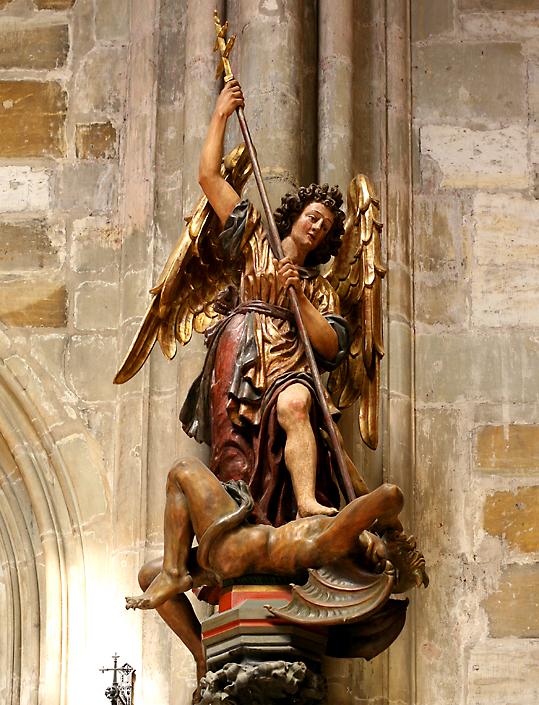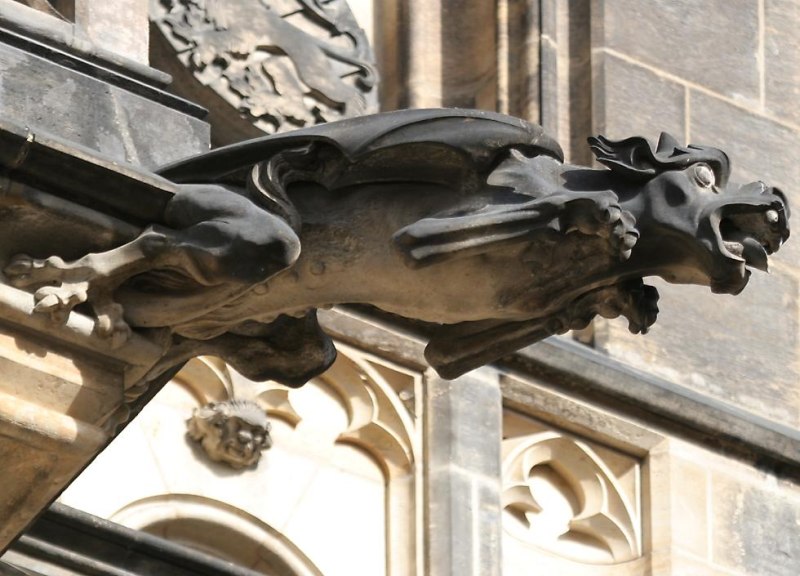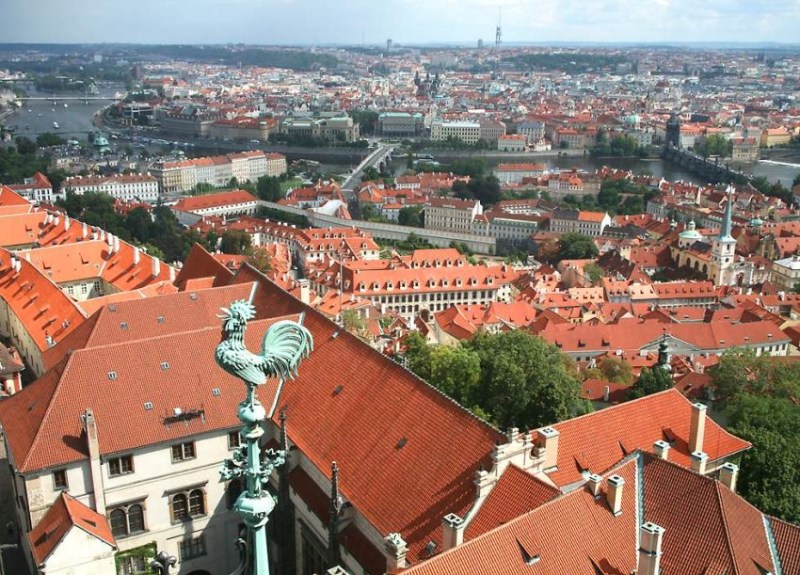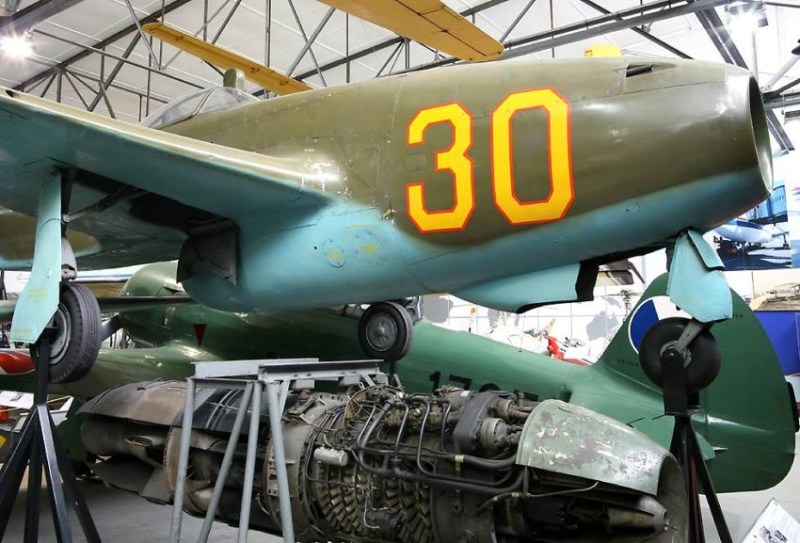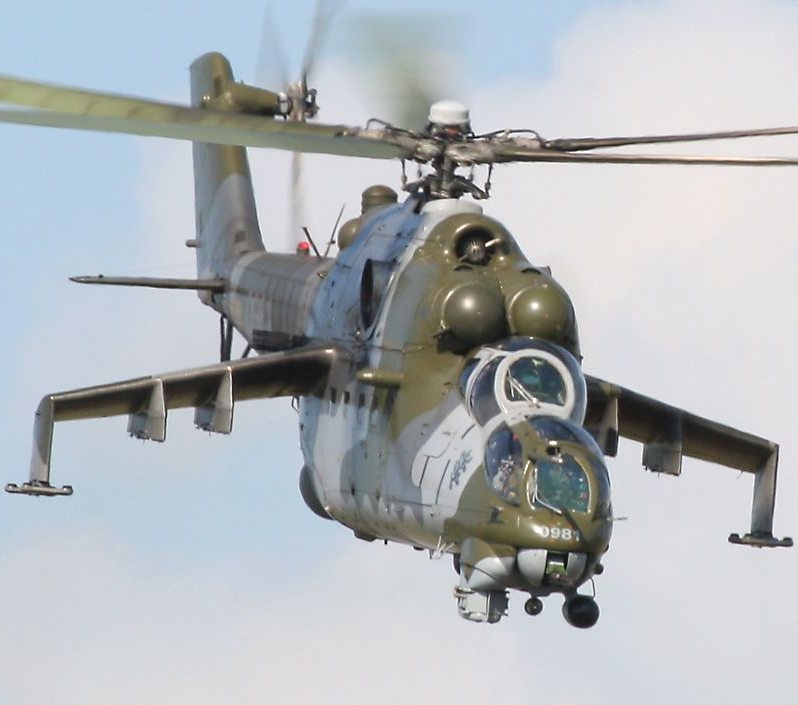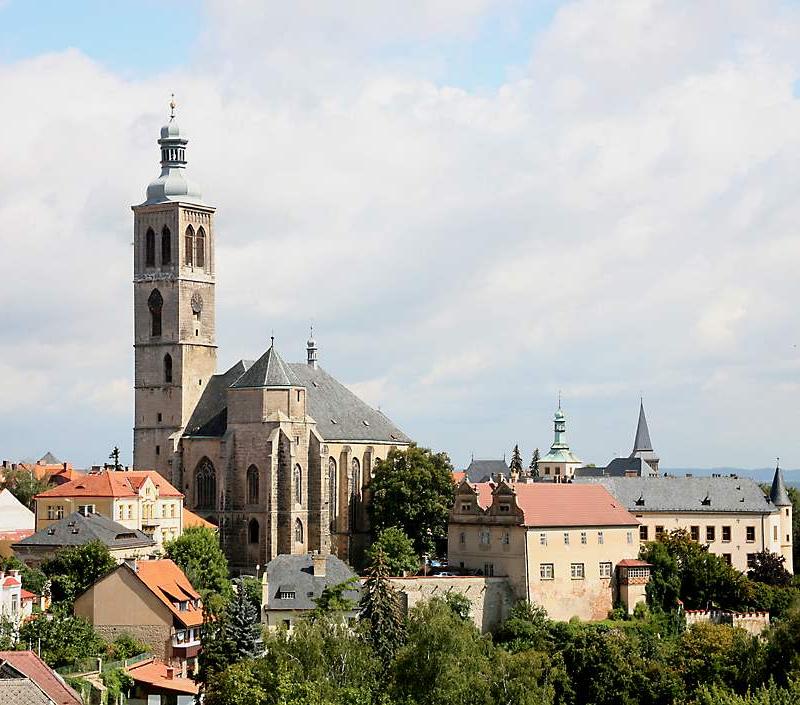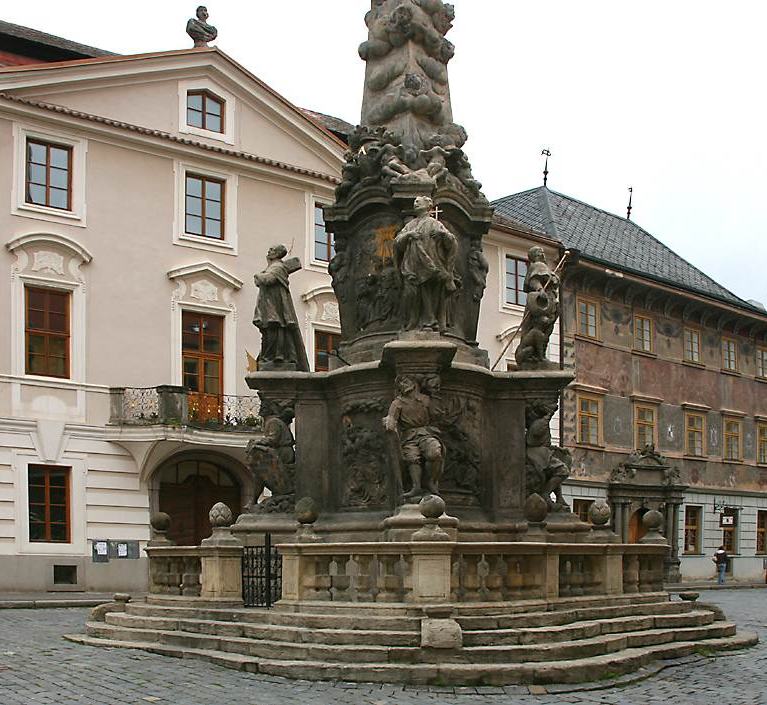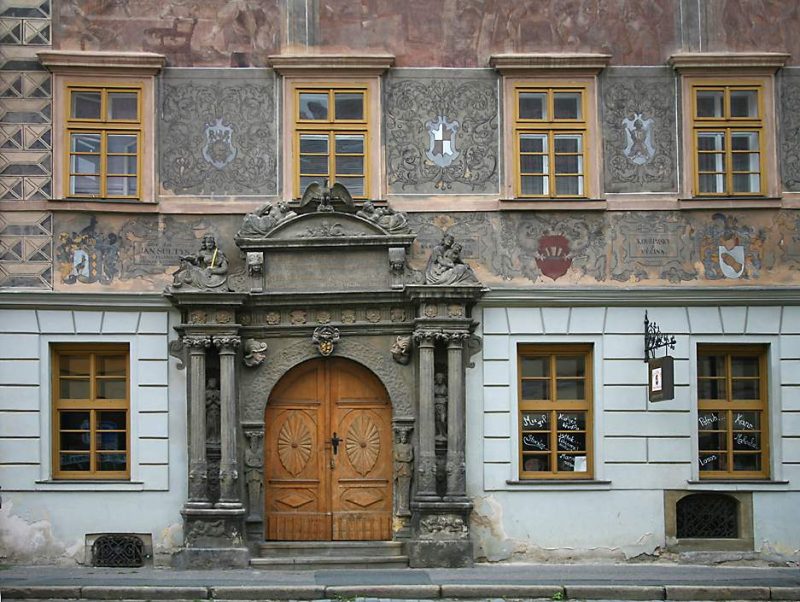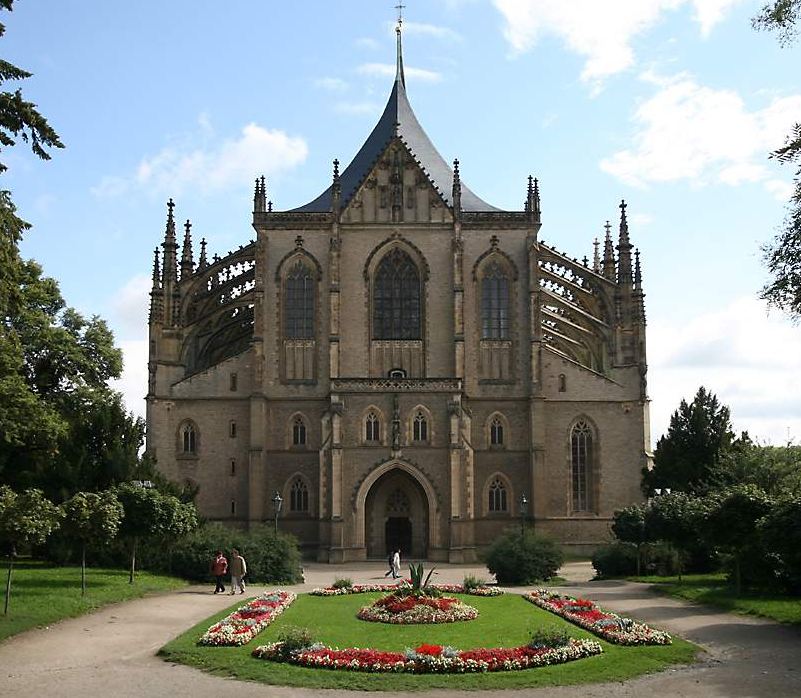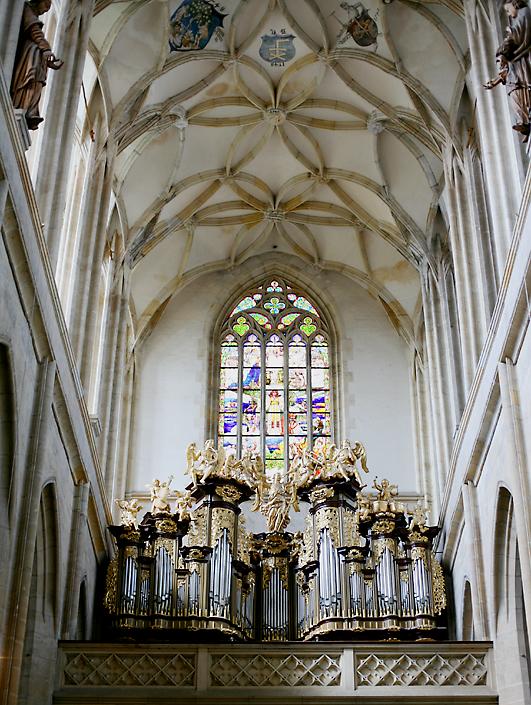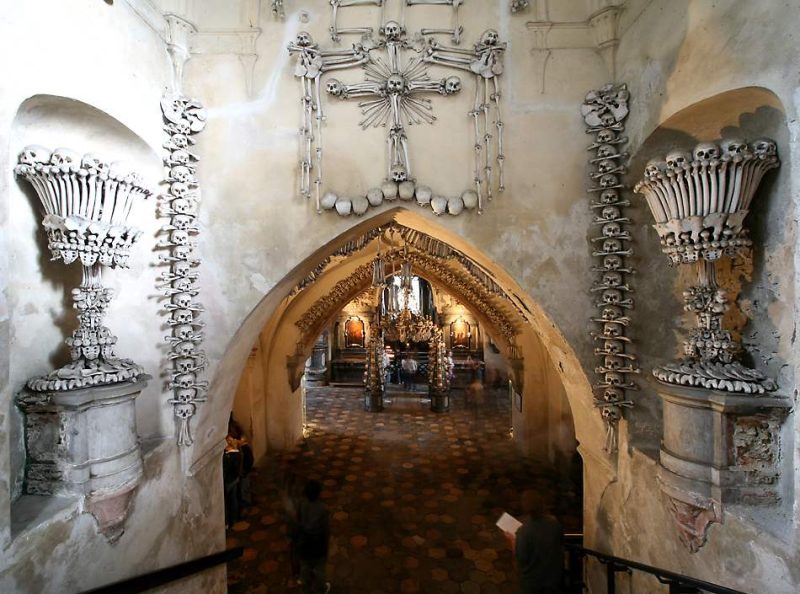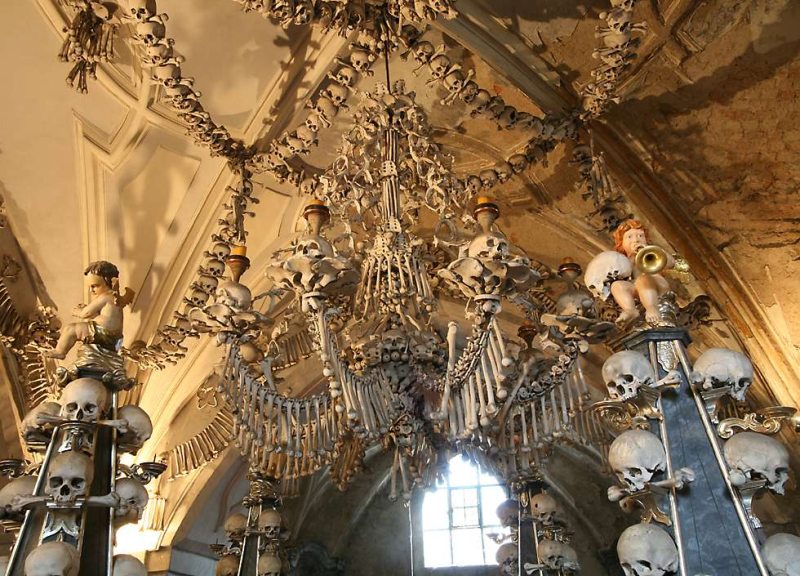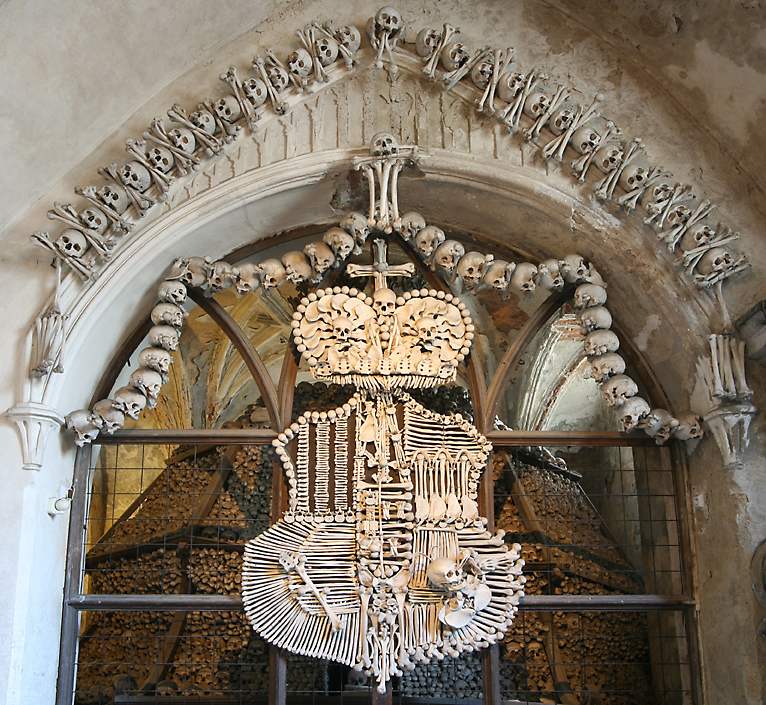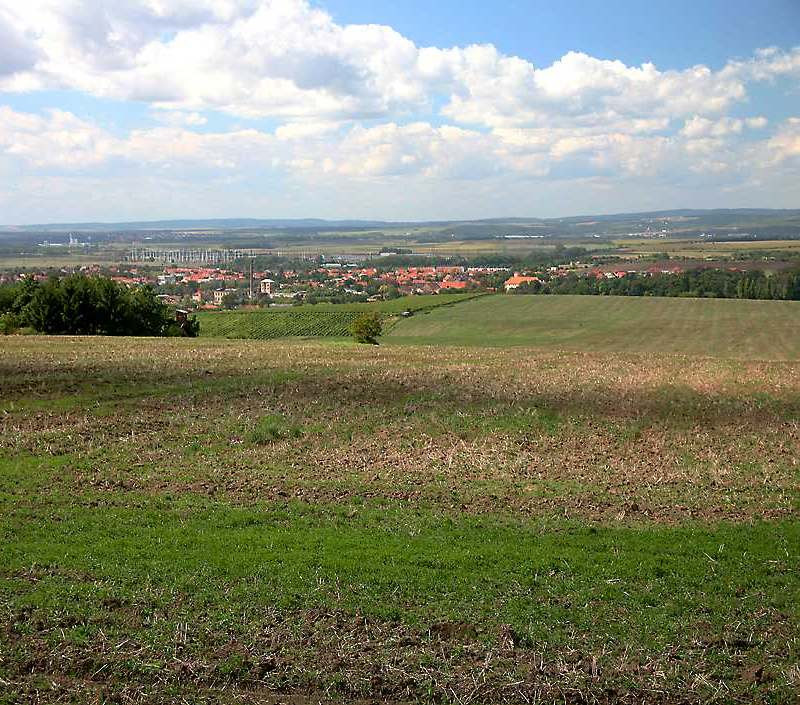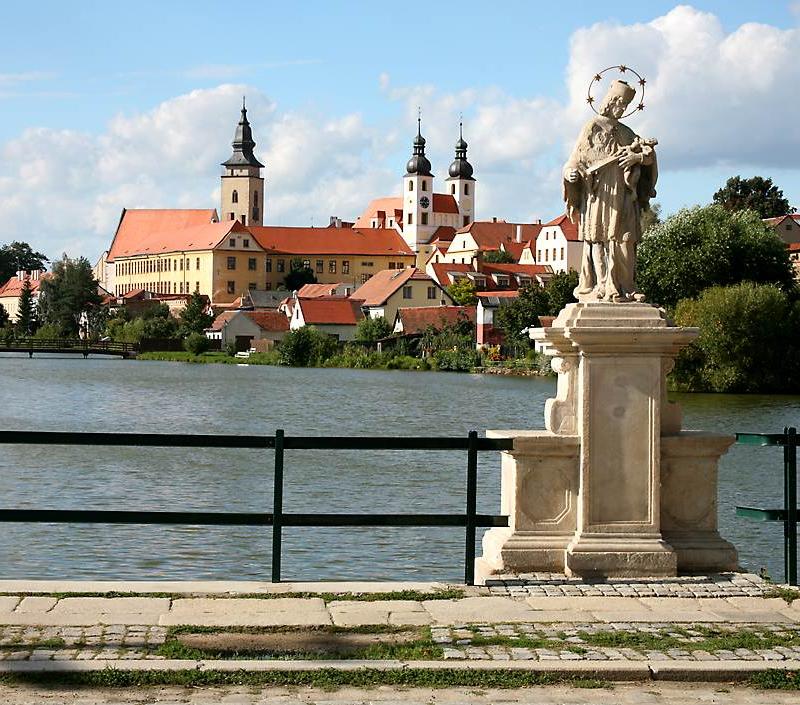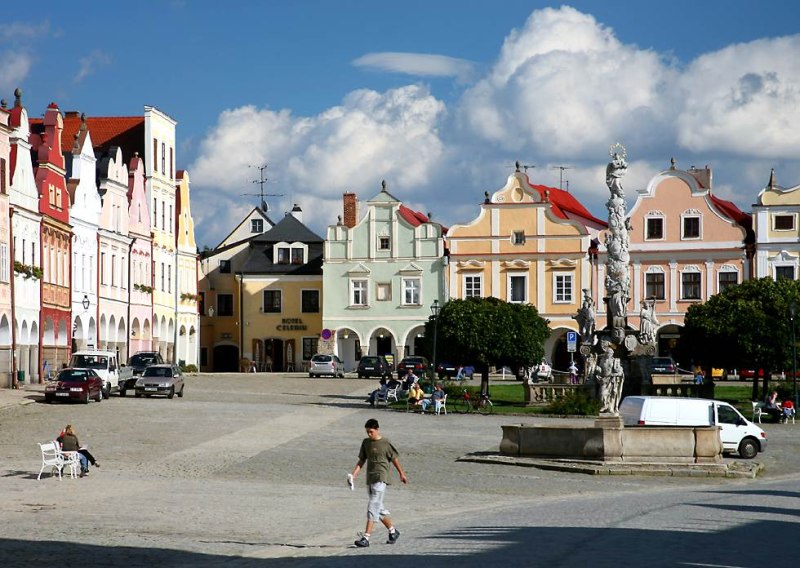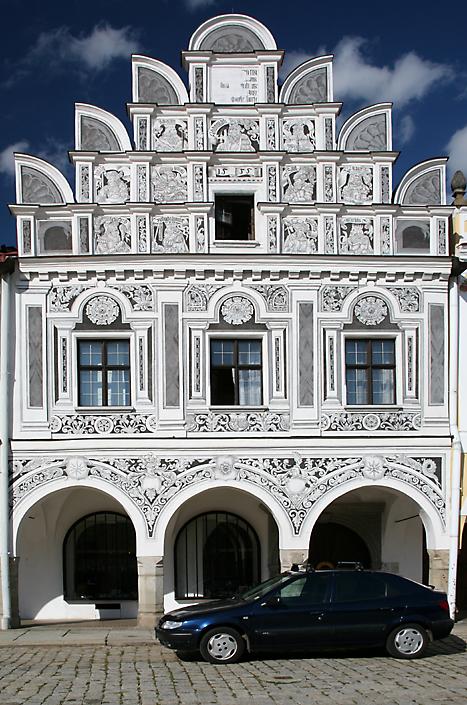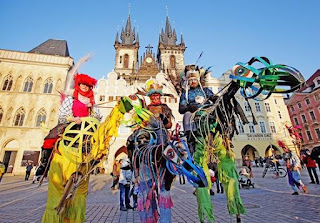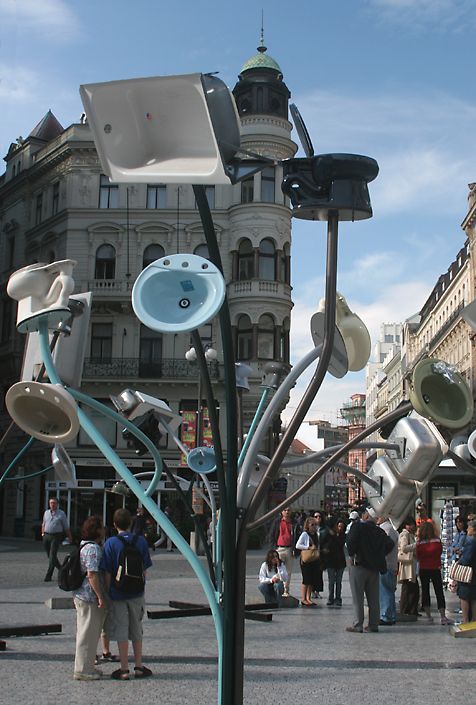 Prague has plenty of modern art, too - if that isn't a contradiction in terms! Prague has plenty of modern art, too - if that isn't a contradiction in terms! Here's a very popular piece, consisting of some, ah, rather utilitarian household items! |
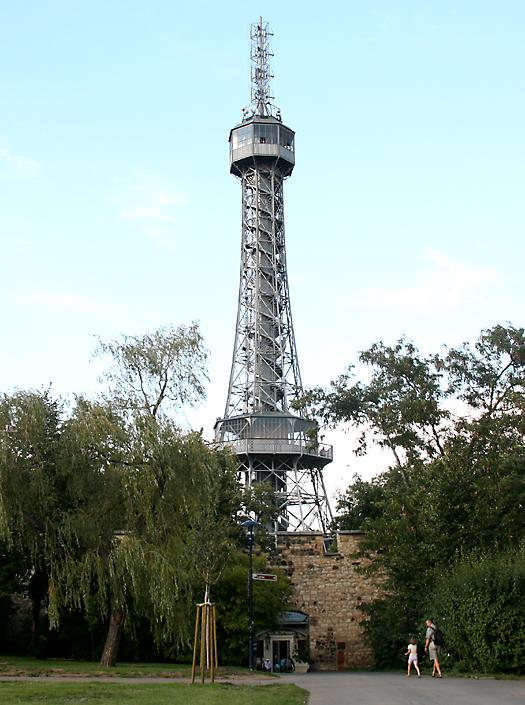 A fairly short walk further up the hills near the cathedral is the 60 meter tall Petrin Tower, built out of iron in 1891 for the Jubilee Exhibition. If you don't want to walk then you can take a funicular railway up to the top, though you have to get to the south-west side of the hill to board the railway. A fairly short walk further up the hills near the cathedral is the 60 meter tall Petrin Tower, built out of iron in 1891 for the Jubilee Exhibition. If you don't want to walk then you can take a funicular railway up to the top, though you have to get to the south-west side of the hill to board the railway. A rather feeble imitation of the Eiffel Tower, it's still worth buying a ticket and climbing the 299 steps to the top viewing level, because the views are even better than from the cathedral. |
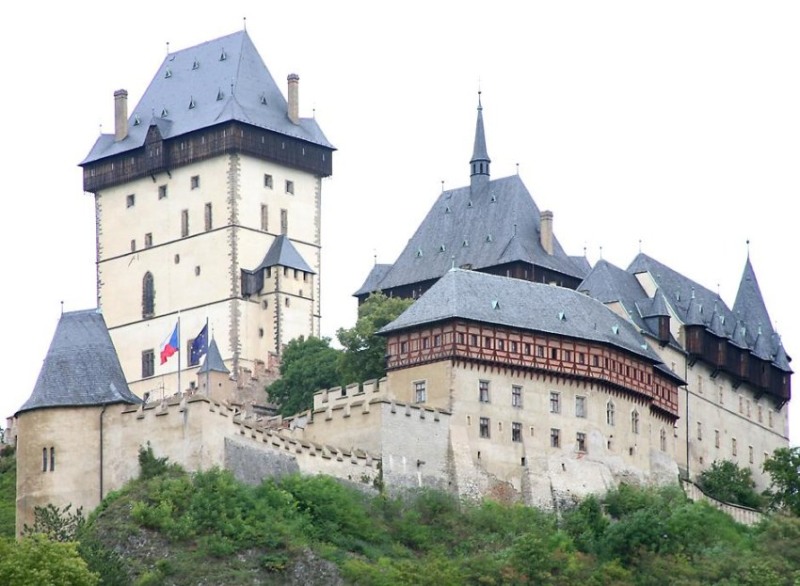 |
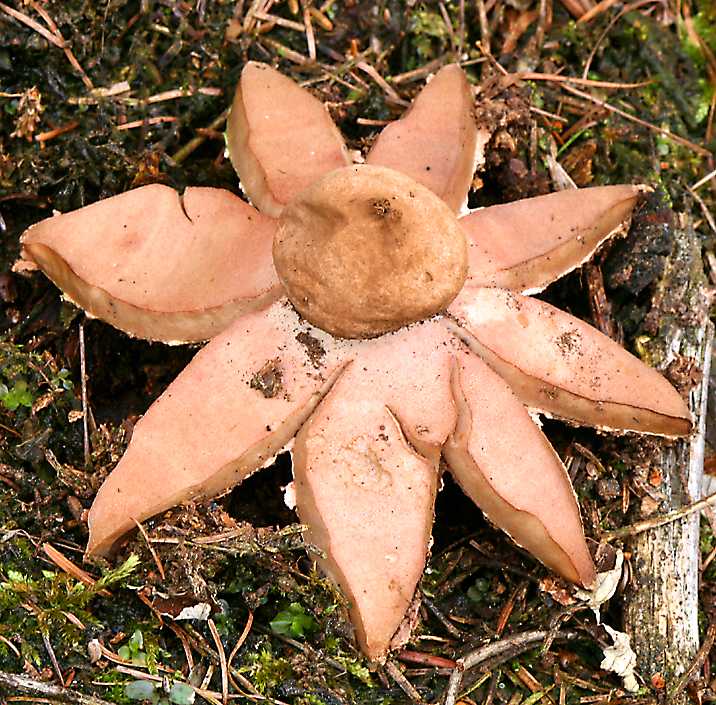 It was a rather dreary day when I visited Karlstejn so, once I'd taken a few photos and done the tour, I did what any tourist would do - I went out into the surrounding forests to photograph the local mushrooms and toadstools! It was a rather dreary day when I visited Karlstejn so, once I'd taken a few photos and done the tour, I did what any tourist would do - I went out into the surrounding forests to photograph the local mushrooms and toadstools! There were certainly plenty of weird and wonderful fungi to see, including this "earthstar", one of several varieties of puffball in the area, and even some colorful and exotic slime mold, a lifeform which Spinal Tap singer David St Hubbins says will one day take over the planet, if ever it can decide whether it's a plant or an animal. |
| It's an ill wind that blows no good, and the rain that fell while I was at Karlstejn turned out to be very lucky for me when I noticed this little critter just a few hundred meters from the castle. I could scarcely contain myself when I saw it, because it's the first salamander I've ever seen. I've photographed many other amphibians like frogs and toads, but never come across one of these critters before. Like toads, most salamanders are poisonous and in the case of this fire salamander, the yellow spots correspond fairly closely with its poison glands. |
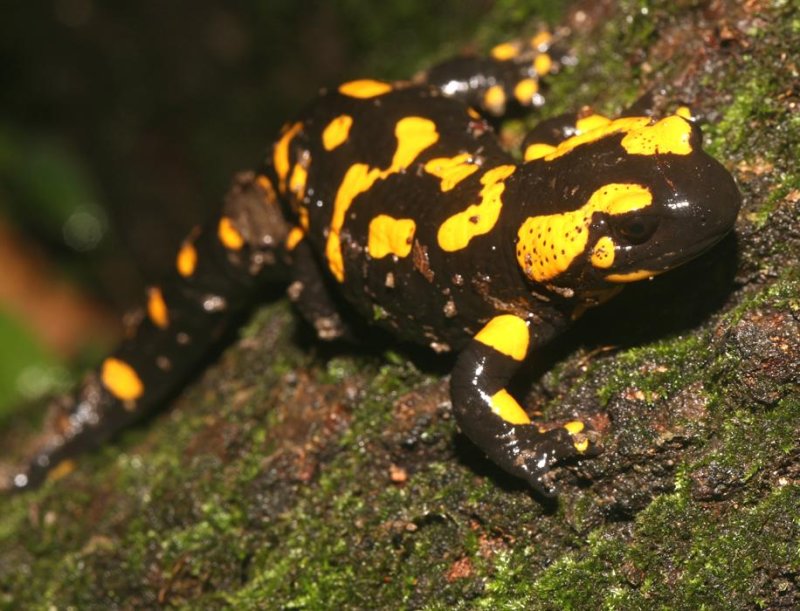 |
| Thankfully, on my way back to Prague I decided to drop in on a Unesco World Heritage List entry which wasn't originally on my itinerary, the town of Telc. Surrounded by large artificially created fish ponds which doubled as fortifications, this town was everything I was hoping for in terms of beautiful architecture and scenery. As you can see, I was also blessed with some picture perfect weather and I even got to photograph some more cool mushrooms! |
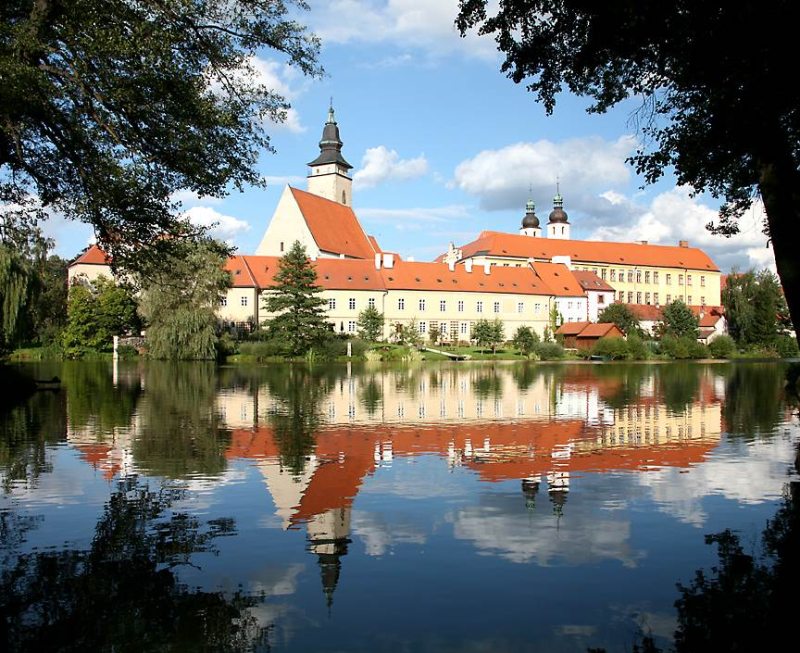 |





